The small, forest-dwelling Siberian jay is widespread, intelligent, agile – and a photographer’s dream
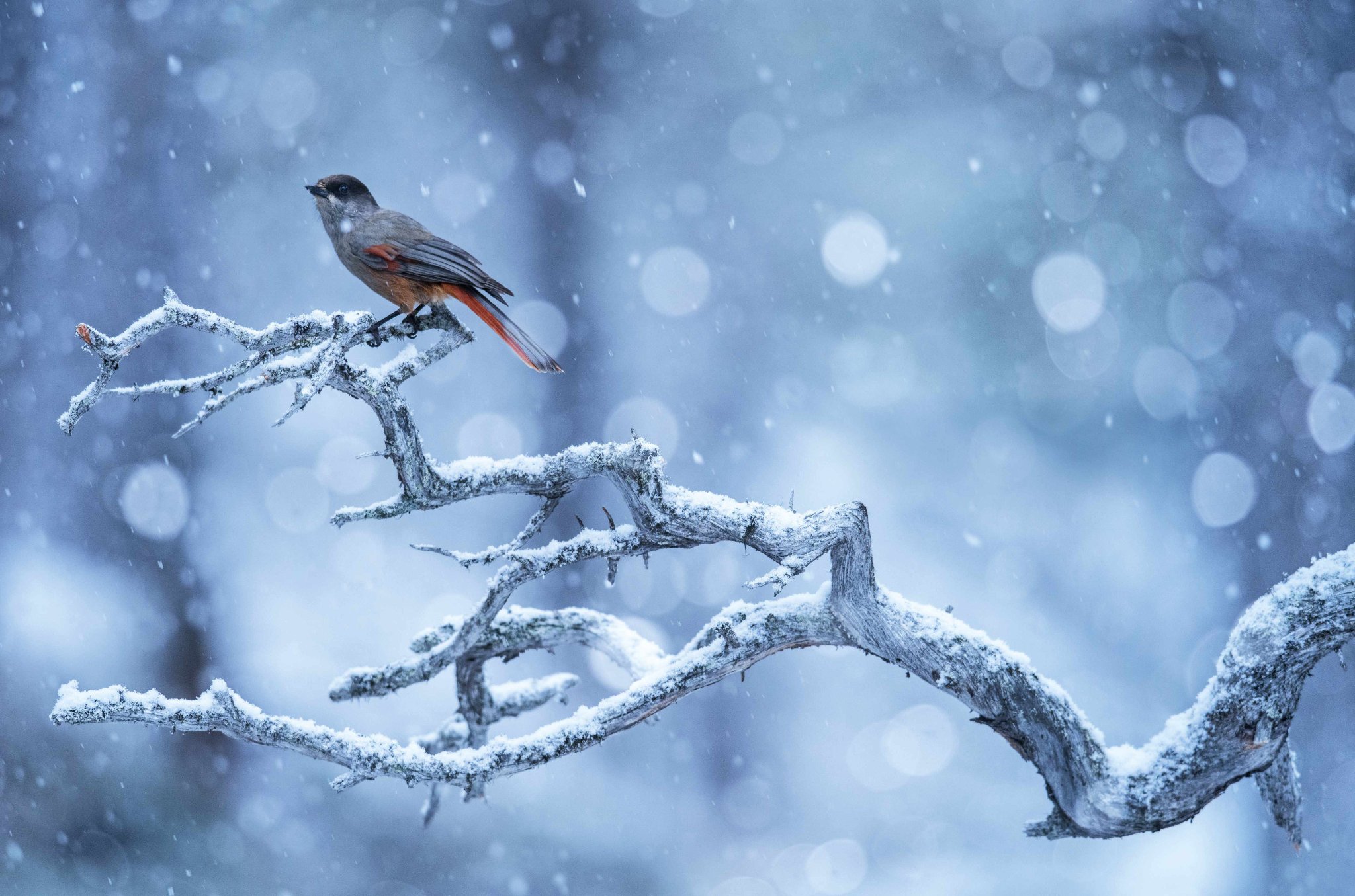
Seeing red
A rust-red flash on an otherwise grey wing and tail, a dusting of cinnamon beneath, a glint of curiosity in deep brown eyes – it can only be a Siberian jay. Nature photographer Florian Smit captured the autumnal activities of this small corvid, about the same size as a mistle thrush, in a remote conifer forest in Arctic Sweden.
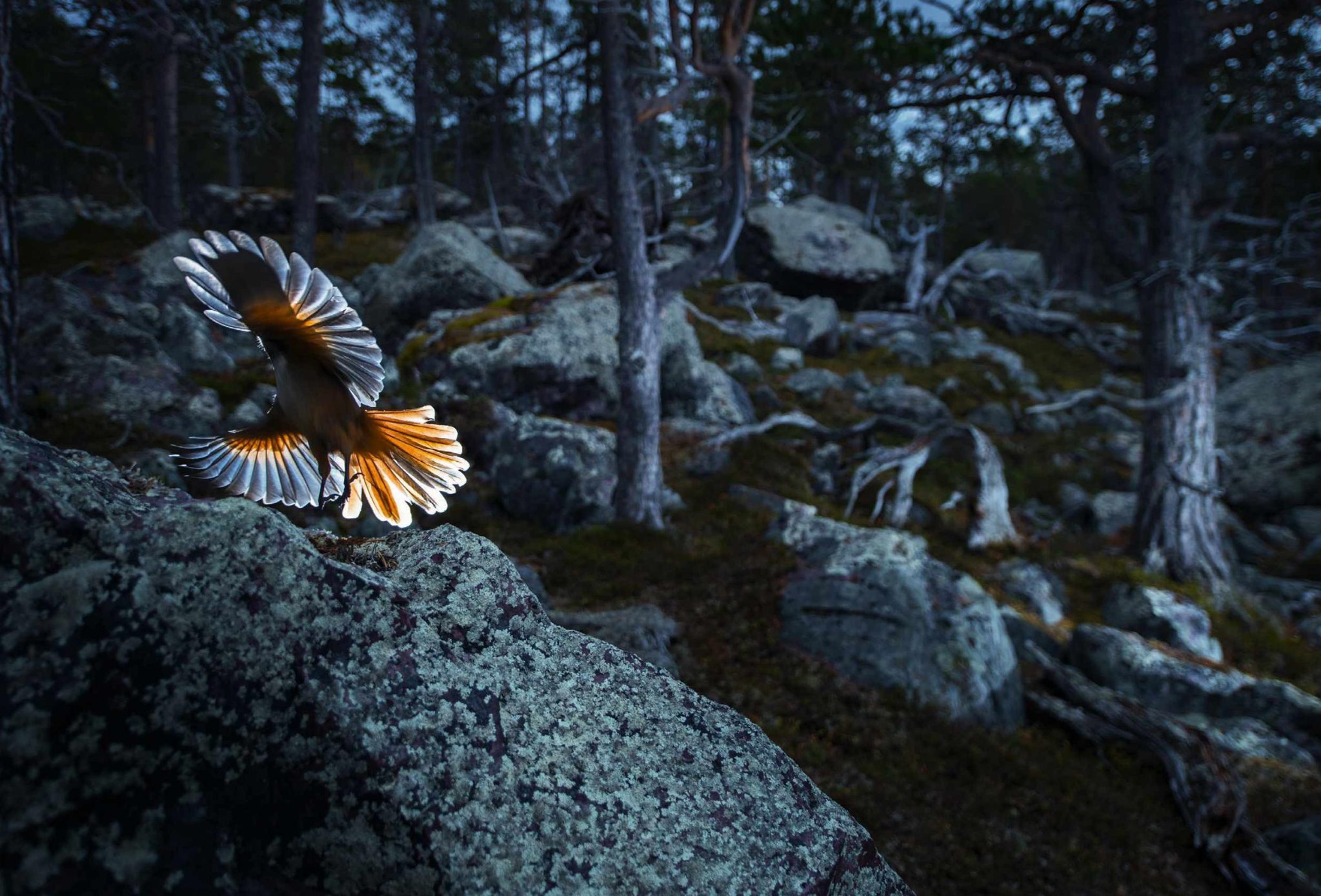
Fanning out
Several million Siberian jays flit among the pines, spruces and larches of the taiga – or boreal forests – of northern Eurasia, inhabiting a vast range spanning nearly 20 million km2 , stretching from Scandinavia across Siberia.
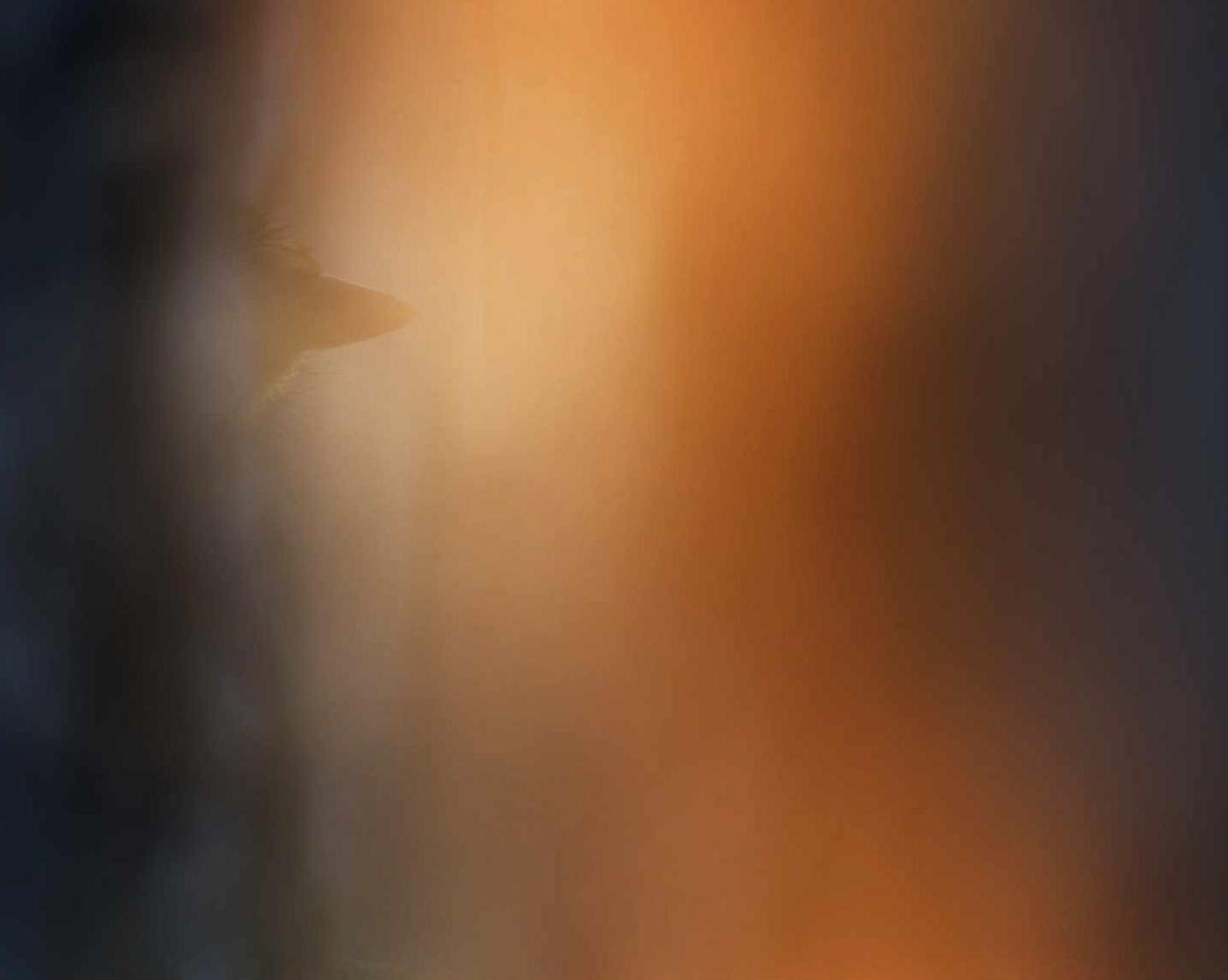
Bill of fare
A Siberian jay’s bill, silhouetted against the soft light of an autumn afternoon, is a handy foraging tool used to snaffle berries and seeds, insects and larvae, spiders and, occasionally, carrion and other birds’ eggs.
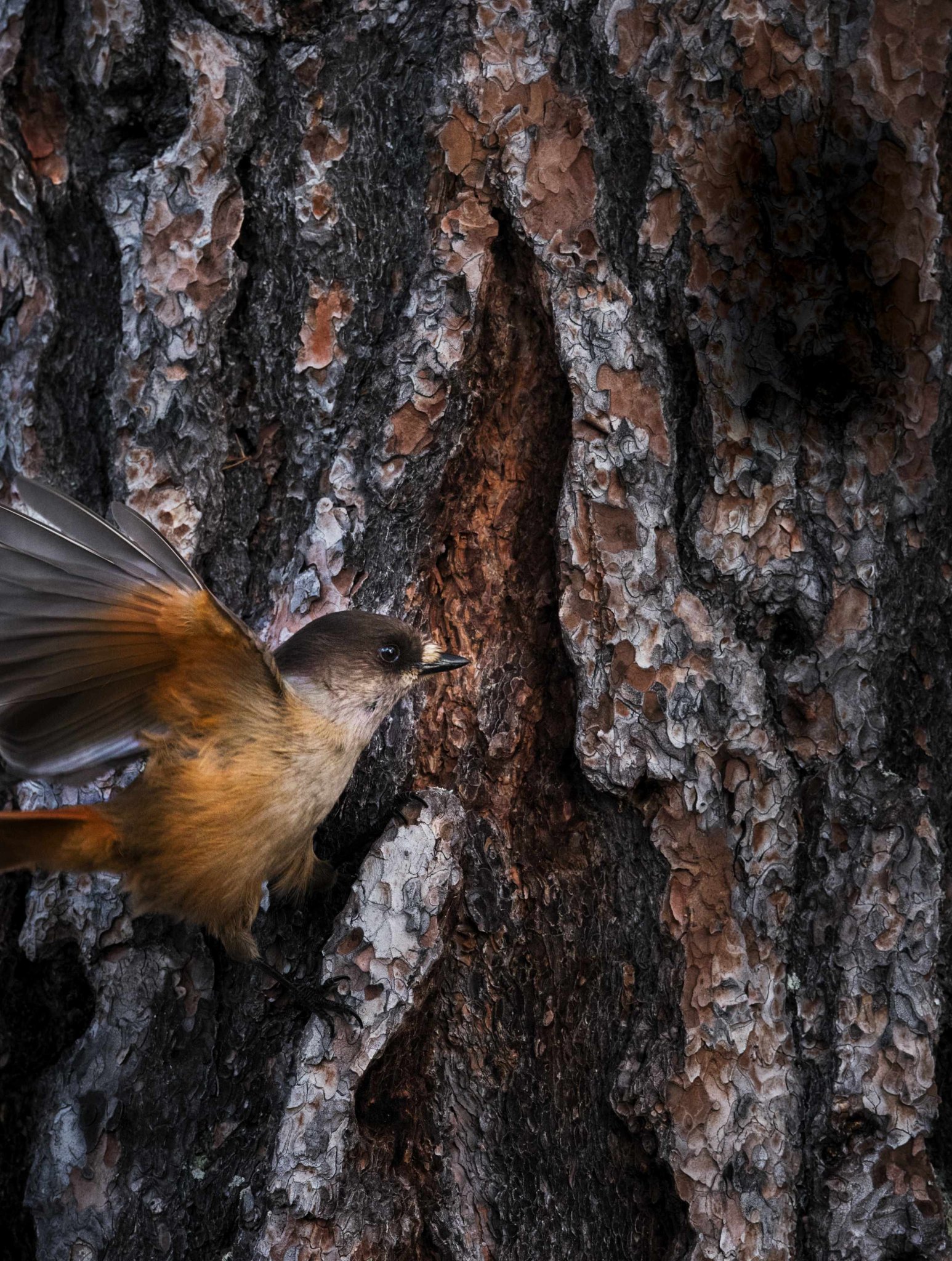
Cache deposit
As autumn ebbs, Siberian jays secrete food – particularly berries and small insects – in caches, which they’ll raid in coming months to see them through the darkest, coldest days of the Arctic Scandinavian winter. Mixing titbits with its sticky saliva, a jay will lodge such food packages in bark crevices or among the beard moss (actually lichens) coating conifers.
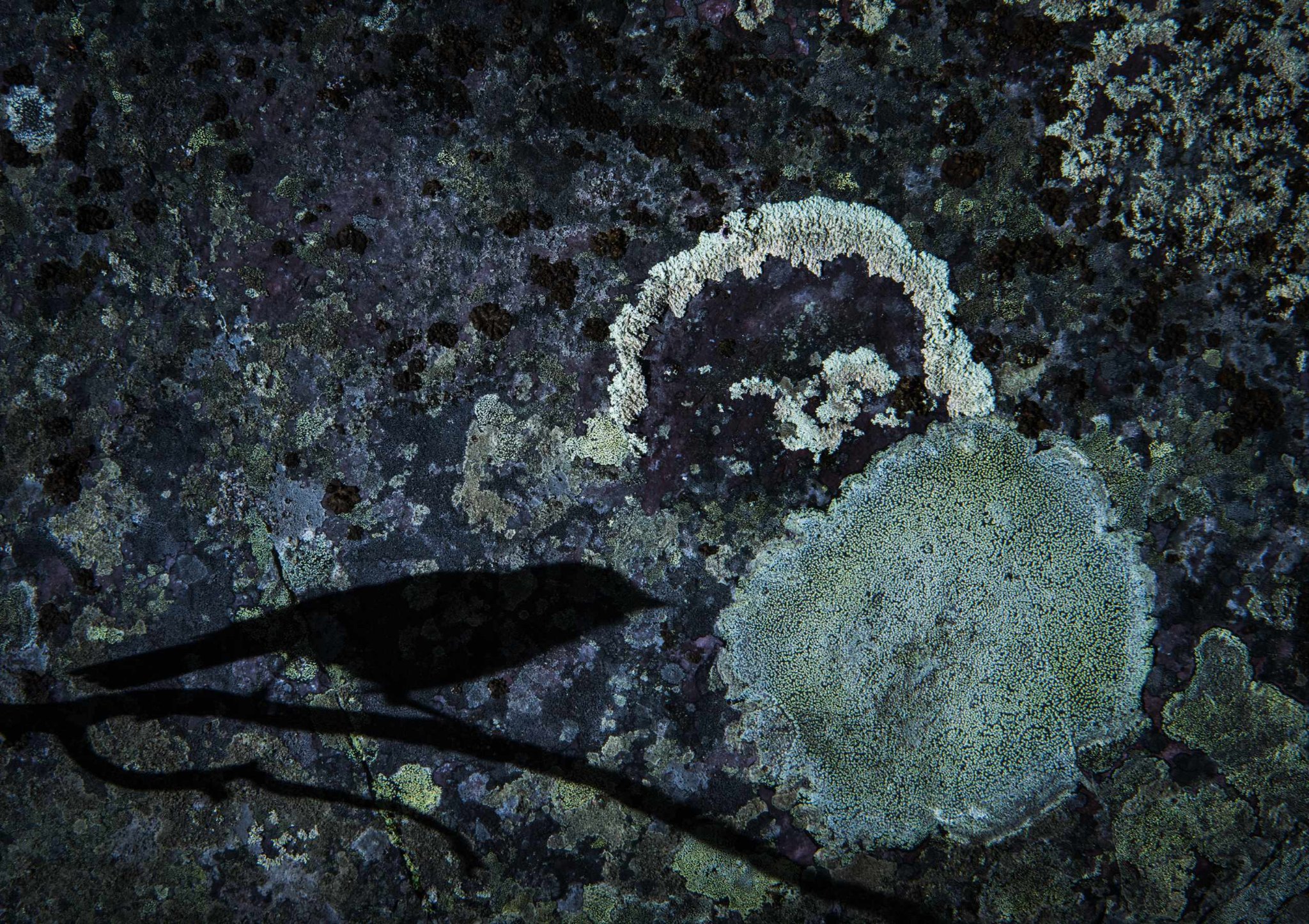
Rock art
Florian used the subtle shades and textures of lichen on scree rock as the background for this shadow portrait of a perching Siberian jay. Lichen-rich old-growth forests provide the ideal habitat for this home-loving bird, which typically doesn’t migrate; an individual rarely moves more than a few kilometres from its patch.
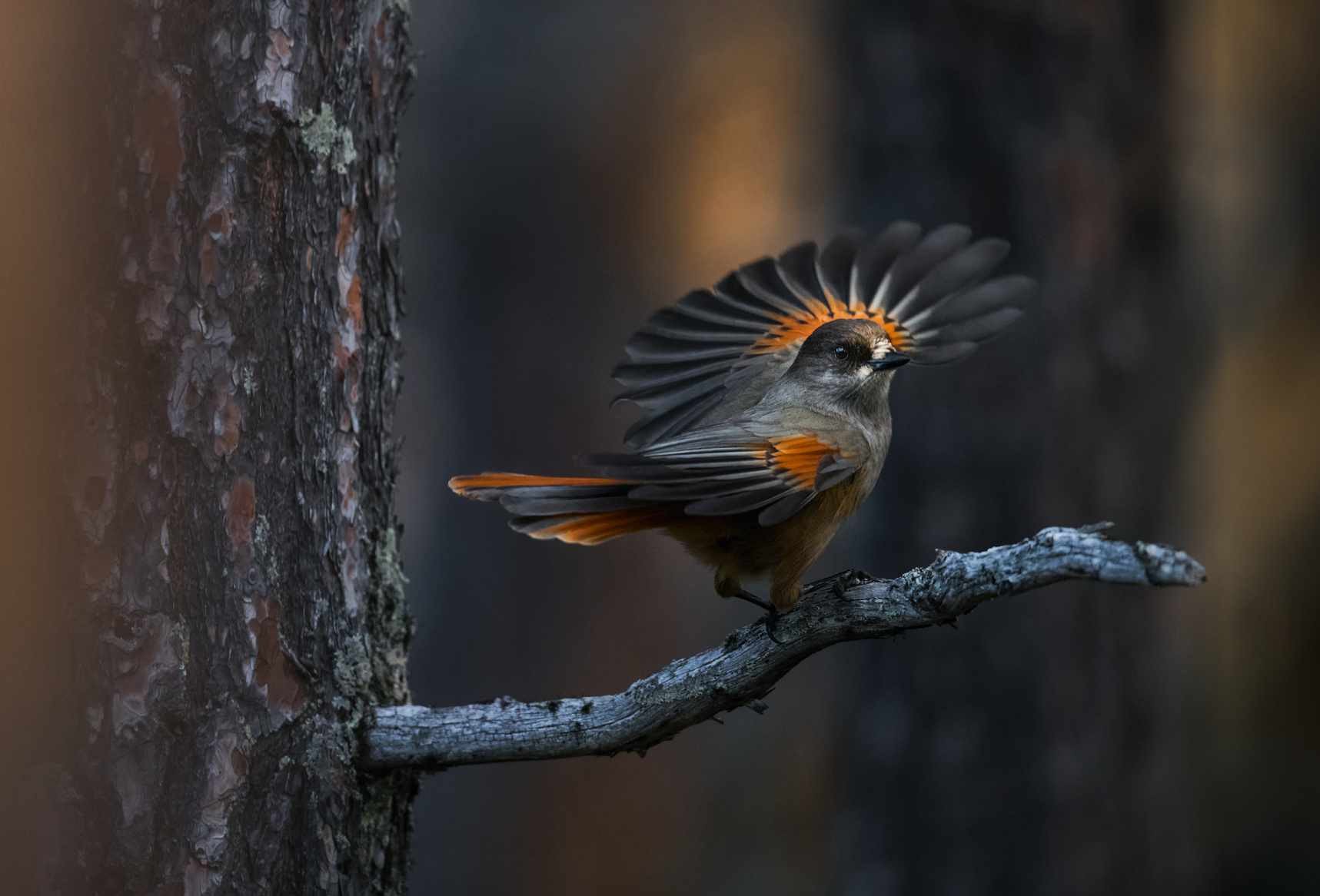
Throwing shapes
“Siberian jays are real acrobats,” says Florian. “On the one hand, these curious birds aren’t shy, which sometimes makes tricky shots possible – but on the other hand they are incredibly agile and fast, which can make capturing an image challenging!”
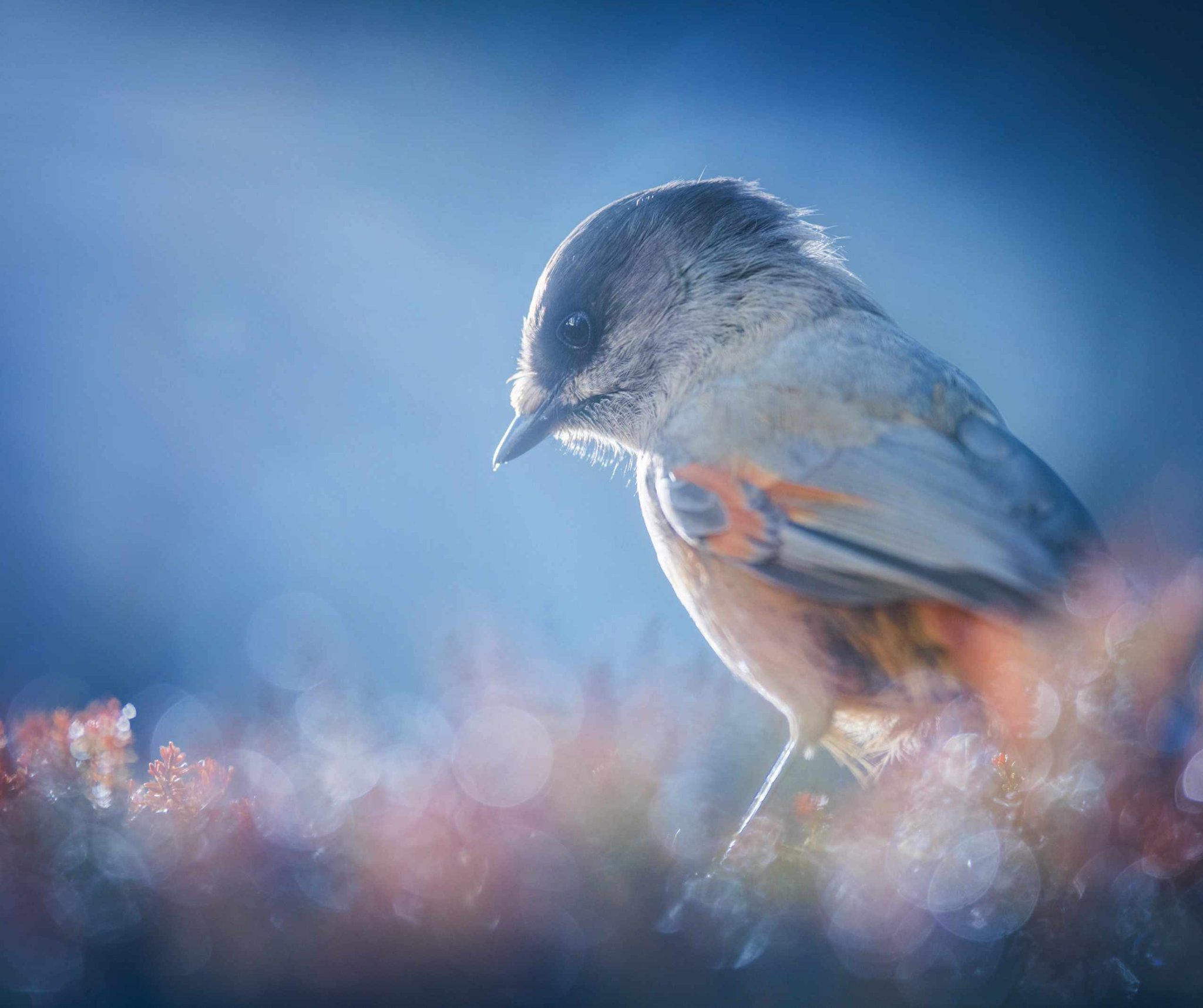
Fall feast
“The weeks from mid-September to early October are wonderful for photography in the forests of northern Sweden,” says Florian. “Autumn colours are at their loveliest, and the Siberian jays can still find an abundance of food, including the last mossberries and blueberries of the season.”
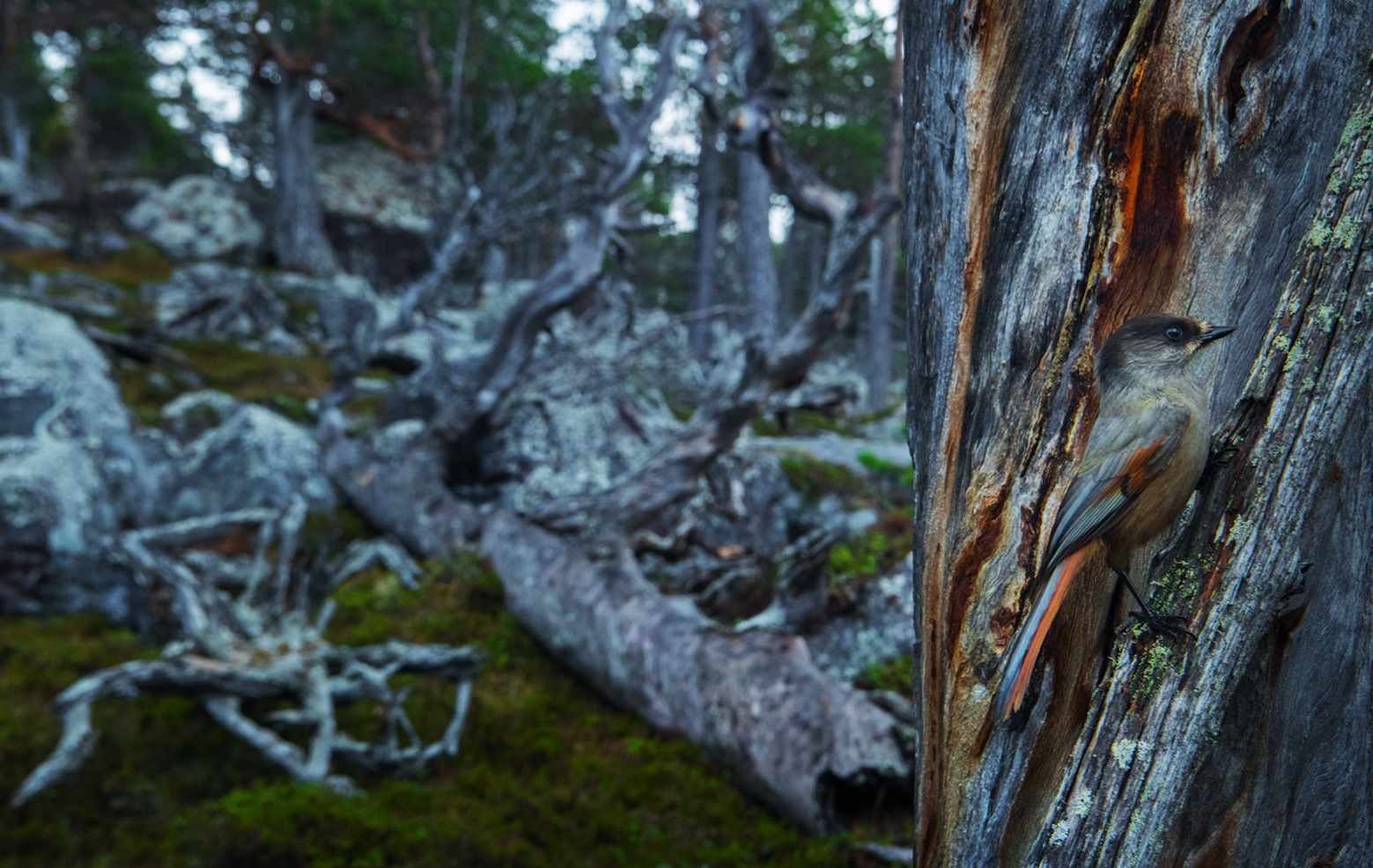
Cryptic colouration
When a Siberian jay perches on a dead pine, the camouflage provided by its plumage becomes clear. Despite its agility in the air, this small species risks predation by goshawks and sparrowhawks; it’s evolved different alarm calls to alert conspecifics to the activities of nearby raptors.

Flock together
Though this individual – like the others in this feature – seems to be flying solo, Siberian jays actually live in small flocks, usually comprising from two to seven members, which defend a territory from interlopers. These groups display an unusual social structure: males are dominant over females, and breeding birds are dominant over non-breeders.
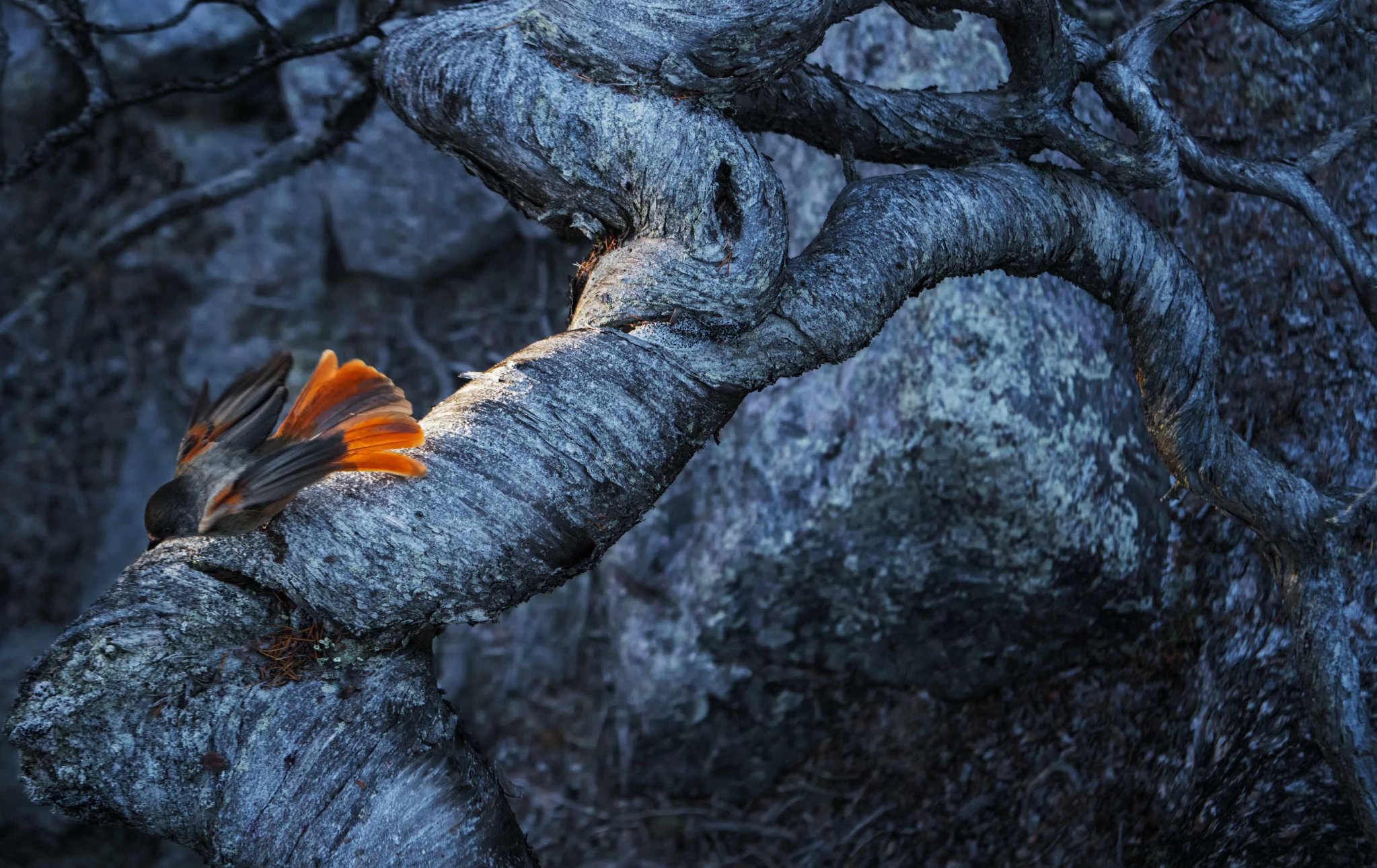
Dark side
With such a large, widespread population, the Siberian jay is not considered to be of conservation concern. Yet its habitat is becoming increasingly eroded and fragmented by human settlement, agriculture and deforestation. As a result of this and other factors, populations are declining in parts of its range, particularly in southernmost regions.
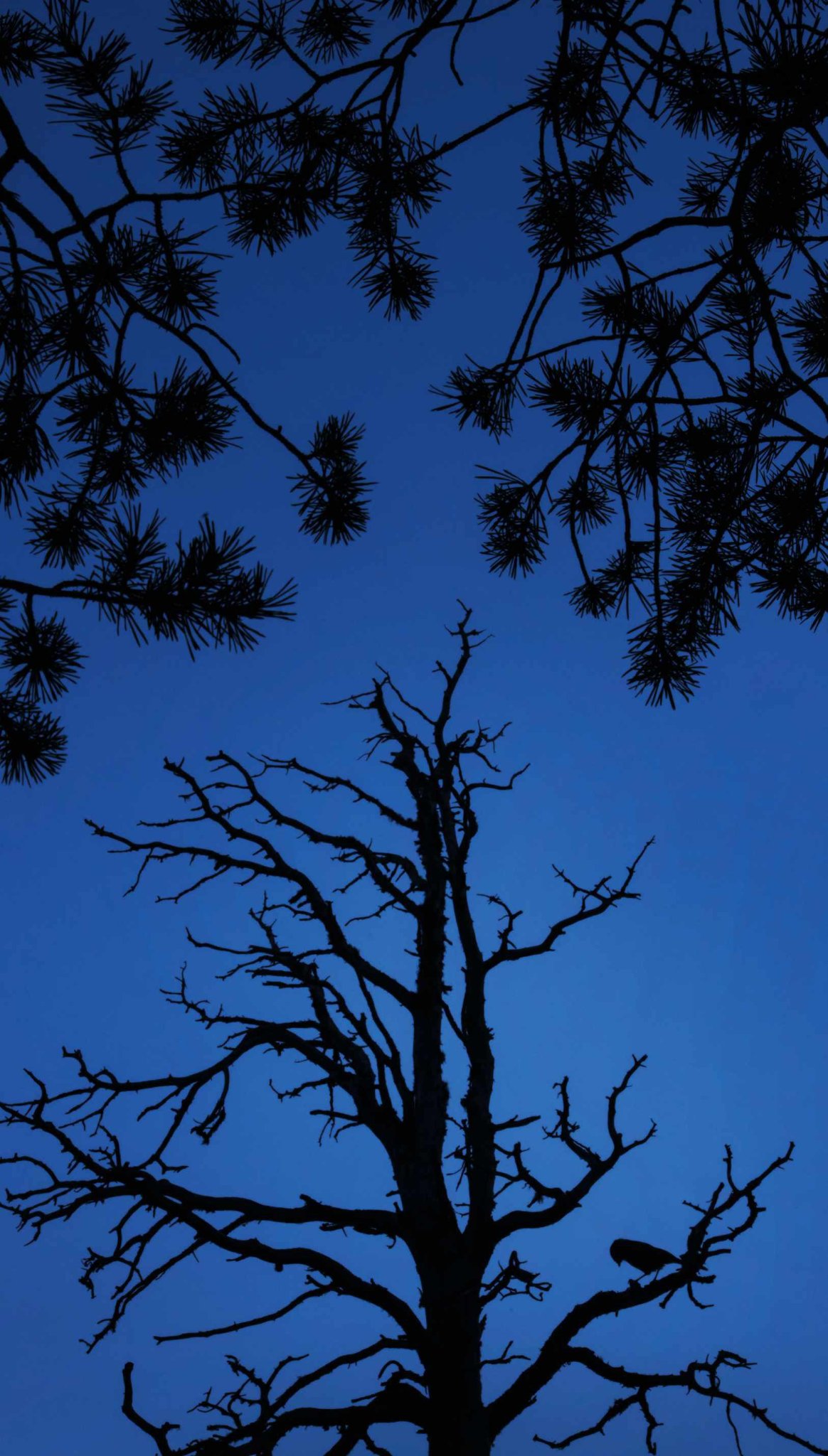
Ghost dance
The bird’s scientific name, Perisoreus infaustus, reflects its historical reputation. In some regions, it was considered a bad omen (in Latin, infaustus means ‘unlucky’). In Finland, though, the Siberian jay was believed to bring good fortune. And, according to ancient legend, on his death, the soul of a hunter might pass into a Siberian jay – sometimes known in Finland as the ‘soul bird’.
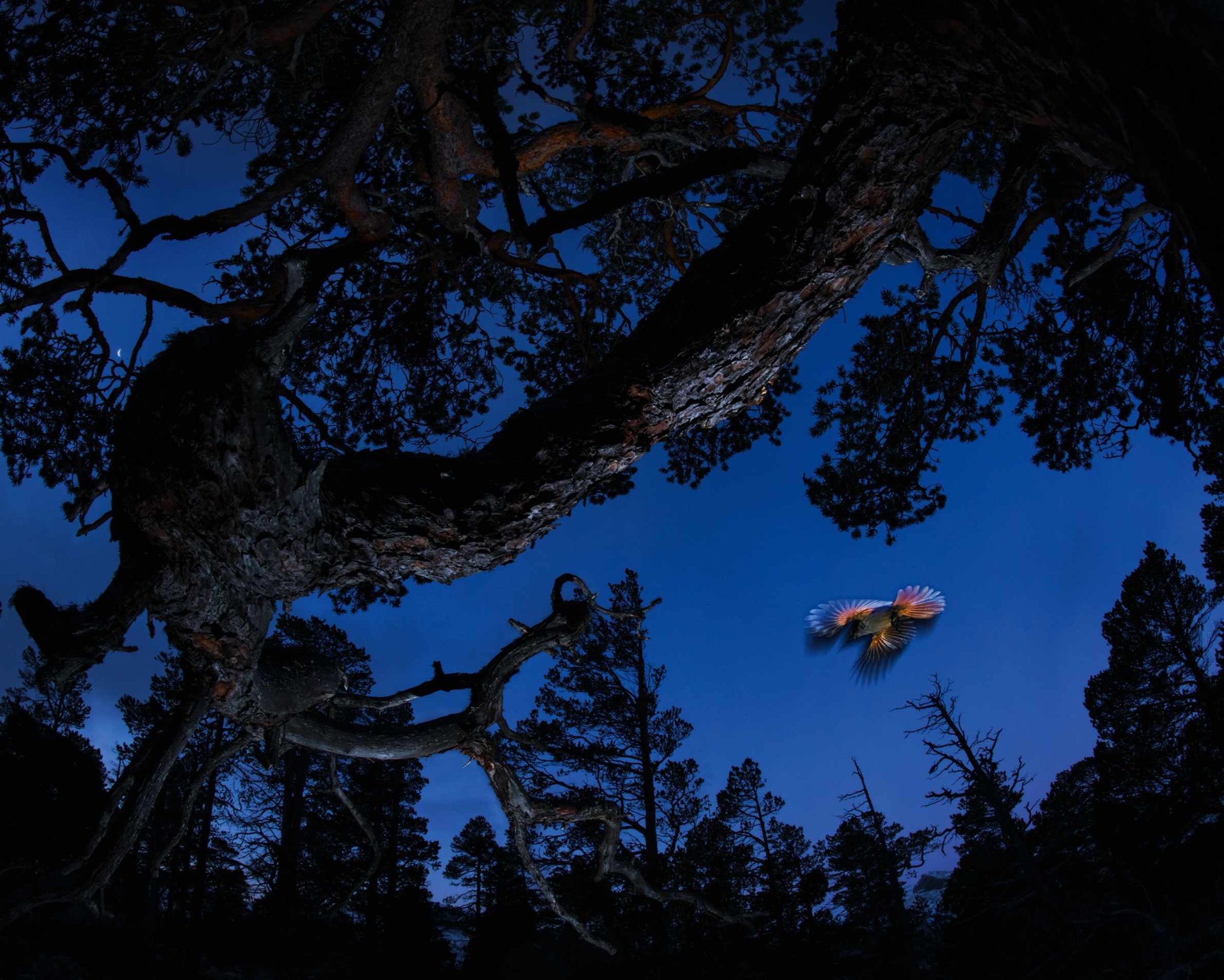
Twilight flight
Florian learned the birds’ favoured routes and locations to plan his shots, using a fish-eye lens and flash to compose this spectacular image. Fortunately for photographers, Siberian jays are famously accommodating – in other places, where they became accustomed to forestry workers, they’ve been known to gather to take food from people.
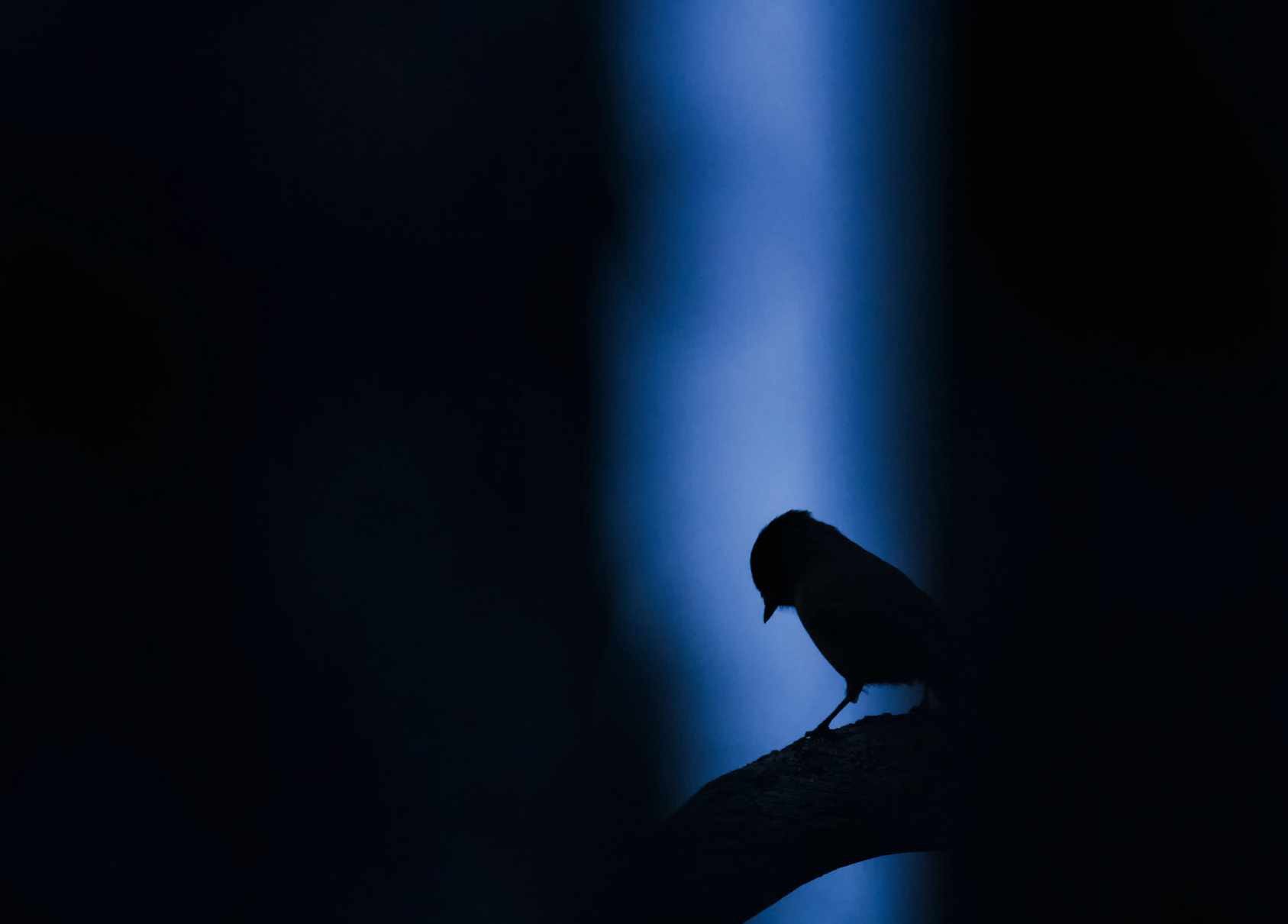
Forest sanctuary
This haunting image of a single bird, silhouetted between two trees, emphasises both the beauty and the fragility of the dense, old-growth conifer forest that’s the Siberian jay’s favoured home. Destruction and fragmentation of this habitat further isolates populations of this sedentary bird, reducing gene flow and, potentially, resilience.
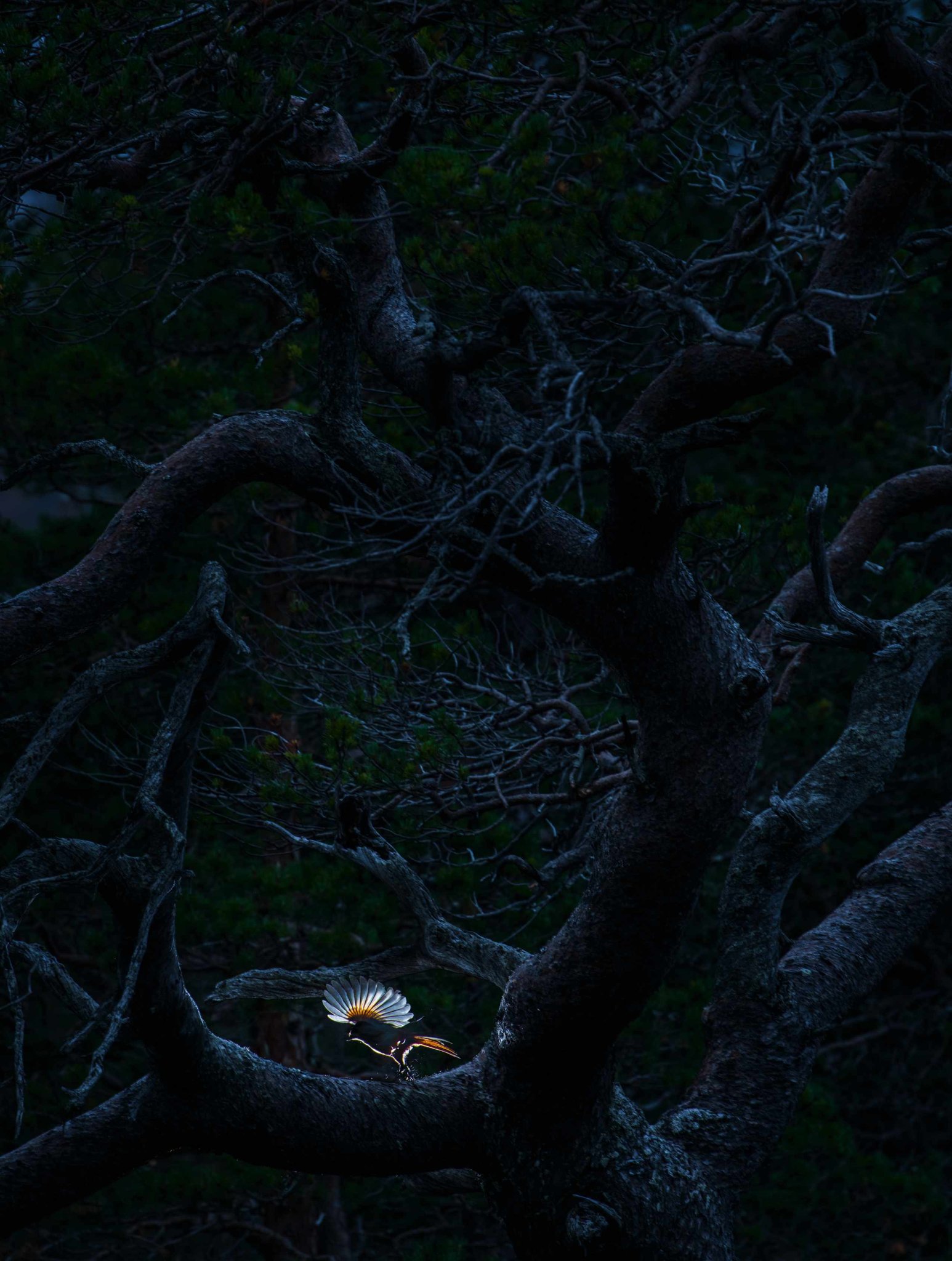
Final flourish
Having endured the Arctic winter, this Siberian jay and its lifelong mate (the species is monogamous) may breed in early spring. Building a nest amid dense foliage, lining it with down feathers, beard moss and other insulation, the female will lay three or four eggs – forming the next generation of this charismatic denizen of the forest.

ABOUT THE PHOTOGRAPHER
Florian Smit is a nature photographer and writer based in northern Germany. He also teaches photography courses and presents visual shows about his travels and wildlife experiences. Find out more at floriansmit.com.